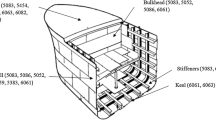Abstract
Steel structures are widely used in railway infrastructures. Their stress state is the most important determinant of the safety of these structures. The elasto-magnetic (EM) sensor is the most promising for stress monitoring of in-service steel structures. Nevertheless, the necessity of magnetic excitation to saturation due to the use of a secondary coil for signal detection, keeps from its engineering application. In this paper, a smart elasto-magneto-electric (EME) sensor using magneto-electric (ME) sensing units to take the place of the secondary coil has been exploited for the first time. The ME sensing unit is made of ME laminated composites, which has an ultrahigh ME voltage coefficient and can measure the magnetic induction simply and precisely. Theoretical analysis and characterization experiments firstly conducted on the ME laminated composites showed that the ME sensing units can be applied in the EM sensor for improved performance in stress monitoring. A tension test of a steel bar was carried out to characterize our smart EME sensor and the results showed high accuracy and sensitivity. The present smart EME sensor is a promising tool for stress monitoring of steel structures in railway and other civil infrastructures.
Similar content being viewed by others
References
Bartels, K.A., Kwun, H., Hanley, J.J., 1996. Magnetostrictive sensors for the characterization of corrosion in rebars and prestressing strands. Proceedings of SPIE, 2946:40–50. [doi:10.1117/12.259151]
Bozorth, R.M., 1951. Ferromagnetism. IEEE Press, New York, USA.
Brophy, J.W., Brett, C.R., 1996. Guided UT wave inspection of insulated feedwater piping using magnetostrictive sensors. Proceedings of SPIE, 2947:205–209. [doi:10. 1117/12.259168]
Cannon, D.F., Pradier, H., 1996. Rail rolling contact fatigue research by the European Rail Research Institute. Wear, 191(1–2):1–13. [doi:10.1016/0043-1648(95)06650-0]
Cannon, D.F., Edel, K.O., Grassie, S.L., Sawley, K., 2003. Rail defects: an overview. Fatigue and Fracture of Engineering Materials and Structures, 26(10):865–886. [doi:10. 1046/j.1460-2695.2003.00693.x]
Dong, S.X., Li, J.F., Viehland, D., 2003. Ultrahigh magnetic field sensitivity in laminates of TERFENOL-D and Pb(Mg1/3Nb2/3)O3-PbTiO3 crystals. Applied Physics Letters, 83(11):2265–2267. [doi:10.1063/1.1611276]
Ekberg, A., Kabo, E., 2005. Fatigue of railway wheels and rails under rolling contact and thermal loading—an overview. Wear, 258(7–8):1228–1300. [doi:10.1016/j.wear.2004.03.039]
GB/T 699-1999. Quality Carbon Structural Steels. National Standard of People’s Republic of China (in Chinese).
Jia, Y.M., Or, S.W., Wang, J., Chan, H.L.W., Zhao, X.Y., Luo, H.S., 2007. High magnetoelectric effect in laminated composites of giant magnetostrictive alloy and lead-free piezoelectric ceramic. Journal of Applied Physics, 101(10):104103. [doi:10.1063/1.2732420]
Ke, S., Ye, D.P., Zhang, G.J., Su, L.G., 2003. Quick Manual for Magnetic Characteristic Curves of Comman Steels. China Machine Press, Beijing, China (in Chinese).
Kleinke, D.K., Uras, H.M., 1994. A magnetostrictive force sensor. Review of Scientific Instruments, 65(5):1699–1710. [doi:10.1063/1.1144863]
Kvasnica, B., Fabo, P., 1996. Highly precise non-contact instrumentation for magnetic measurement of mechanical stress in low-carbon steel wires. Measurement Science and Technology, 7(5):763–767. [doi:10.1088/0957-0233/7/5/007]
Sasada, I., Uramoto, S., Harada, K., 1986. Noncontact torque sensors using magnetic heads and a magnetostrictive layer on the shaft surface-application of plasma jet spraying process. IEEE Transactions on Magnetics, 22(5):406–408. [doi:10.1109/TMAG.1986.1064383]
Sasaki, T., Takahashi, S., Kanematsu, Y., Satoh, Y., Iwafuchi, K., Ishida, M., Morii, Y., 2008. Measurement of residual stresses in rails by neutron diffraction. Wear, 265(9–10): 1402–1407. [doi:10.1016/j.wear.2008.04.047]
Seekircher, J., Hoffmann, B., 1989. New magnetoelastic force sensor using amorphous alloys. Sensors and Actuators A: Physical, 22(1–3):401–405. [doi:10.1016/0924-4247(89) 80002-0]
Tang, D.D., Huang, S.L., Chen, W.M., Jiang, J.S., 2008. Study of a steel strand tension sensor with difference single bypass excitation structure based on the magneto-elastic effect. Smart Materials and Structures, 17(2):025019. [doi:10.1088/0964-1726/17/2/025019]
Wang, G.D., Wang, M.L., 2004. The utilities of U-shape EM sensor in stress monitoring. Journal of Structural Engineering and Mechanics, 17(3–4):291–302.
Wang, M.L., Koontz, S., Jarosevic, A., 1998. Monitoring of Cable Forces Using Magneto-Elastic Sensors. Proceedings of 2nd US-China Symposium Workshop on Recent Developments and Future Trends of Computational Mechanics in Structural Engineering, Dalian, China, p.337–349.
Wang, M.L., Lloyd, G.M., Hovorka, O., 2001. Development of a remote coil magnetoelastic stress sensor for steel cables. Proceedings of SPIE, 4337:122–128. [doi:10.1117/12.435584]
Wang, Y.J., Or, S.W., Chan, H.L.W., Zhao, X.Y., Luo, H.S., 2008a. Magnetoelectric effect from mechanically mediated torsional magnetic force effect in NdFeB magnets and shear piezoelectric effect in 0.7Pb(Mg1/3Nb2/3)O3-0.3PbTiO3 single crystal. Applied Physics Letters, 92(12):123510. [doi:10.1063/1.2901162]
Wang, Y.J., Cheung, K.F., Or, S.W., Chan, H.L.W., Luo, H.S., 2008b. PMN-PT single crystal and Terfenol-D alloy magnetoelectric laminated composites for electromagnetic device applications. Journal of the Ceramic Society of Japan, 116(1352):540–544. [doi:10.2109/jcersj2.116.540]
Author information
Authors and Affiliations
Corresponding author
Additional information
Project supported by the National Natural Science Foundation of China (Nos. 50908202, 51178426, 90915008, and 60801011), the Zhejiang Provincial Natural Science Foundation, China (No. Y1090382), the Fok Ying-Tong Education Foundation for Young Teachers in the Higher Education Institutions of China (No. 122012), and the Key Science and Technology Innovation Team Program of Zhejiang Province, China (No. 2010R50034)
Rights and permissions
About this article
Cite this article
Duan, Yf., Zhang, R., Zhao, Y. et al. Smart elasto-magneto-electric (EME) sensors for stress monitoring of steel structures in railway infrastructures. J. Zhejiang Univ. Sci. A 12, 895–901 (2011). https://doi.org/10.1631/jzus.A11GT007
Received:
Accepted:
Published:
Issue Date:
DOI: https://doi.org/10.1631/jzus.A11GT007
Key words
- Stress monitoring
- High-speed railway
- Steel rail
- Elasto-magnetic (EM) sensor
- Magneto-electric (ME)
- Elasto-magneto-electric (EME) sensor




